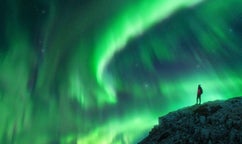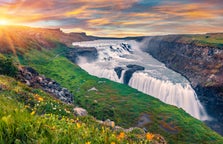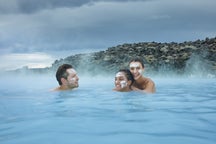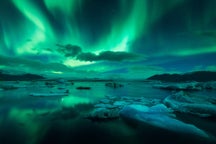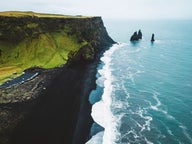
In my travel-blogs through the years, I have shown you several geothermal areas in Iceland, as I love visiting these hot spots in my country.
There is one colourful geothermal area in North Iceland that is off the beaten path and lesser-known than the most popular geothermal areas in this part of Iceland. It is called Þeistareykir, and is well worth a visit.
Þeistareykir is a very active fumarole area with clay pools and solfataras. Let's have a look at it, and I will throw in a few stories about this area as well.
Top photo: steam coming from the Þeistareykir geothermal area
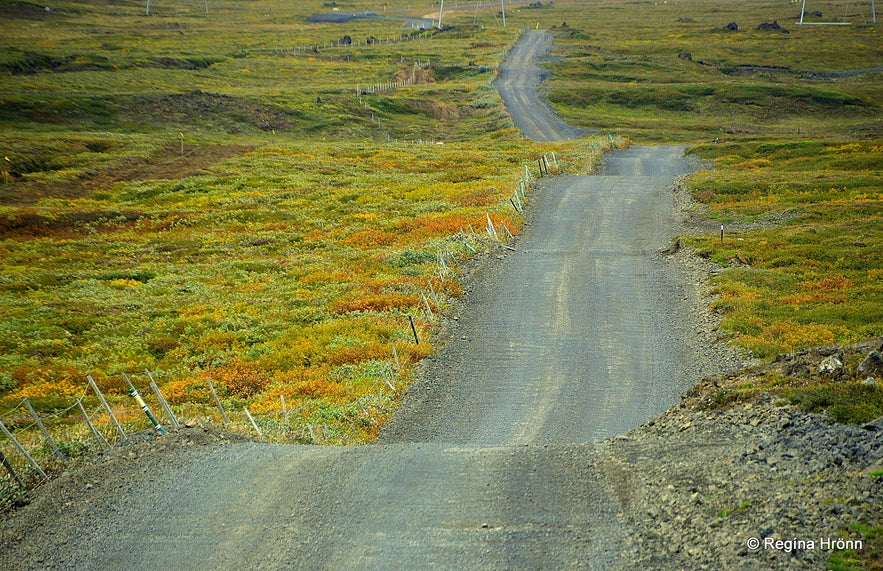
The gravel road leading from Hólasandur to Þeistareykir - there is now a new paved road
Þeistareykjavirkjun, a relatively new geothermal power station by Þeistareykir, run by the National Power Company of Iceland, started officially in November 2017, with the operation of the first phase in 2017 and the second phase in 2018.
And, a paved road now leads from Húsavík town straight to Þeistareykjavirkun geothermal power station, which makes it much easier to visit this beautiful geothermal area than before.
I wanted to try both the new road and the old road leading to Þeistareykir.
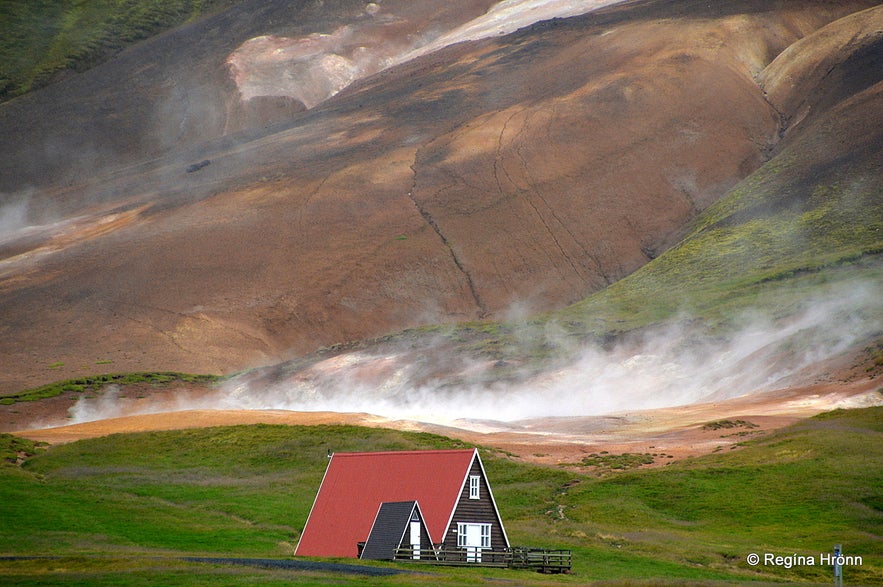
Þeistareykir geothermal area
So the first time that we visited Þeistareykir, we took the old gravel road leading from road number 87 by Hólasandur on the Mývatn side to Þeistareykir, and the paved road leading to Húsavík town on our way back from visiting the geothermal area.
The old road is a bumpy gravel road, but ok as such. Earlier on, when I was little, we didn't have paved roads, so this is how we travelled in Iceland - on bumpy gravel roads, so it took us ages to travel in our country.
There is now a new paved road leading the whole way from Húsavík to Mývatnssveit.
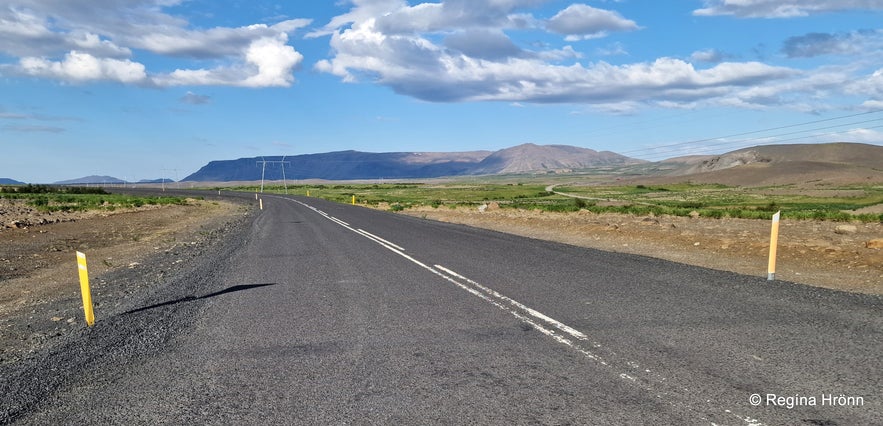 The new paved road
The new paved road
Þeistareykir geothermal area is located by the colourful Mt. Bæjarfjall, which translates into Farm Mountain. You will find several mountains with this name in Iceland.
This mountain is one of the youngest mountains in this area, and its crater is said to be the best preserved pillow lava crater in Iceland. I would love to hike on this mountain one day.
 Mt. Bæjarfjall
Mt. Bæjarfjall
Geothermal areas are at their most beautiful in the sunshine, and I always try to visit them in the sunshine to get the best photos, but when I am travelling up north, so far from Reykjavík in SW-Iceland, where I live, I don't have that privilege.
When I first visited Þeistareykir, it was pouring rain!
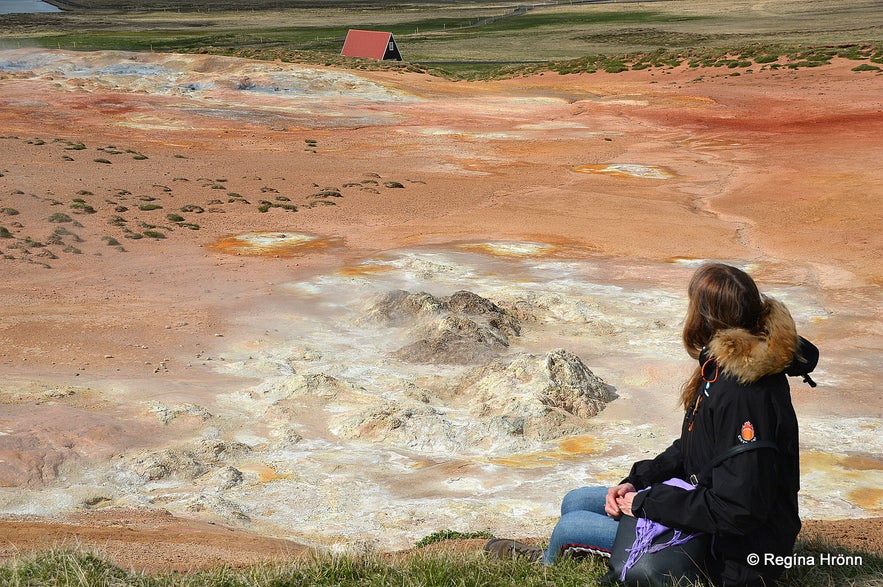
Admiring Þeistareykir geothermal area in 2019
There was so much rain that I got completely drenched and had to constantly wipe the lenses of the cameras. But still, I think that the photos from that visit look ok, given the circumstances.
I visited this area again in the summer of 2019 and got some rays of sun that lit up the beautiful geothermal colours. I was so happy that it was sunny for at least part of my visit - it made all the difference.
And in the summer of 2025, we also got sunshine. The following day, this area was darkened by the volcanic haze from a volcanic eruption on the Reykjanesskagi peninsula in the southwest.
I took the video above on my third visit in the summer of 2025, during a heatwave and soaring temperatures
At Þeistareykir, you will find all kinds of hot springs and mud pools, fumaroles, and vivid geothermal colours.
At Þeistareykir, the earth is white and yellow, orange and bright red, brown and grey with fumes and emissions rising out of the earth everywhere you look.

Þeistareykir geothermal area
The yellow colour is sulfur, and there was sulfur mining at Þeistareykir in earlier times, as in both the Mt. Námafjall area at Mývatn and the Krýsuvíkurhverir geothermal area in southwest Iceland.
Our Danish king needed sulfur, which was used as gunpowder for the Danish army.
Here you will also find pinhole fumaroles. Not that I am a geologist, I am just trying to learn the names of all these various hot springs.
I get information about the names of the hot springs and fumaroles on an excellent website about Volcanic springs around the world.
Boiling mudpools at Þeistareykir
The vast Þeistareykjahraun lava field originated in a crater called Stórihver - Big Hot Spring some 2,400 years ago, making it the youngest lava field in this area.
Here you will mainly find pahoehoe lava - also called ropy lava or helluhraun in Icelandic. I saw on one of the information signs by the geothermal area that it is also called block lava.
Younger still, by far, is the lava field at Gjástykki east of Þeistareykir - it got created in the Krafla Fires in 1975-1984.
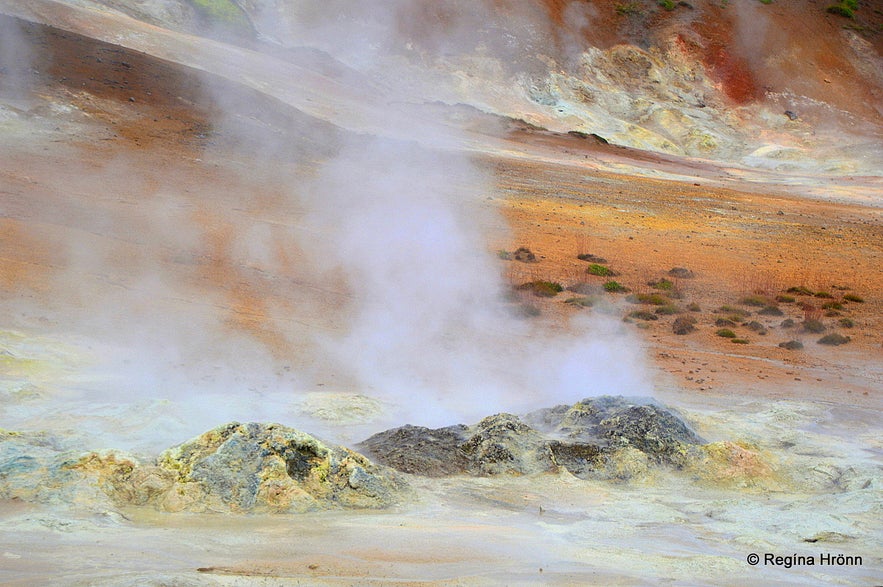
Þeistareykir geothermal area
There is a much older lava field here as well, which flowed from Stóravíti - Big Hell. Þeistareykir is now on the Nature Conservation Register.
The first mention of Þeistareykir was in 1318, and it was inhabited from the Middle Ages until 1873 with some intervals - you will see why later in my travel-blog.
This area is one of the most important heritage sites in Iceland, with some 58 registered heritage sites on the Þeistareykir land!
 Þeistareykir on a sunny day in the summer of 2025
Þeistareykir on a sunny day in the summer of 2025
Several ruins can be seen of the old habitation at Þeistareykir. An outlying church is believed to have stood here in the 14th and 15th centuries, but we don't know where.
It must have been difficult living here, so far away from other farms. Here we find ourselves some 350 metres above sea level, whereas Húsavík, the nearest town, is by the seaside.
Mývatnssveit is also this high up, but a much more populated area.
 Information signs at Þeistareykir
Information signs at Þeistareykir
Old tales tell us that Þeistareykir was hunted after a man had died on the Reykjaheiði heath.
His savage rust-brown dog managed to reach Þeistareykir only to die there.
The dog returned as a ghost and got the name Þeistareykjamóri, haunting both men and horses!
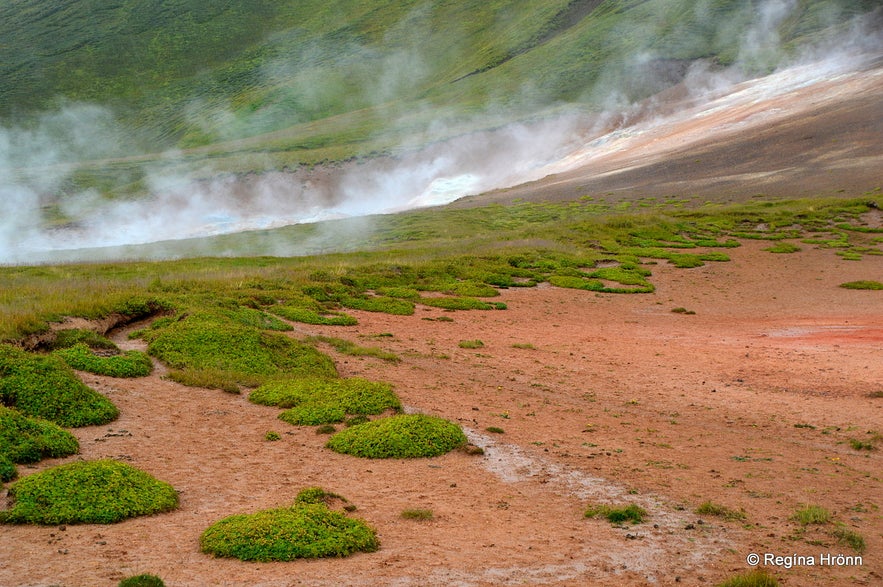
Þeistareykir geothermal area
Other tales are horror stories about two visits from the cannibal polar bears to Þeistareykir, which caused the farms to become deserted for some time.
Polar Bears at Þeistareykir!
Þeistareykir geothermal area
The story goes that the farm at Þeistareykir was twice abandoned after visits from polar bears.
The first tale tells us of a young couple living at Þeistareykir. The farmer had gone to Tjörnes to cut a whale, as times were hard.
A polar bear forced its way into the farm passage, but the young woman was able to scare it away.
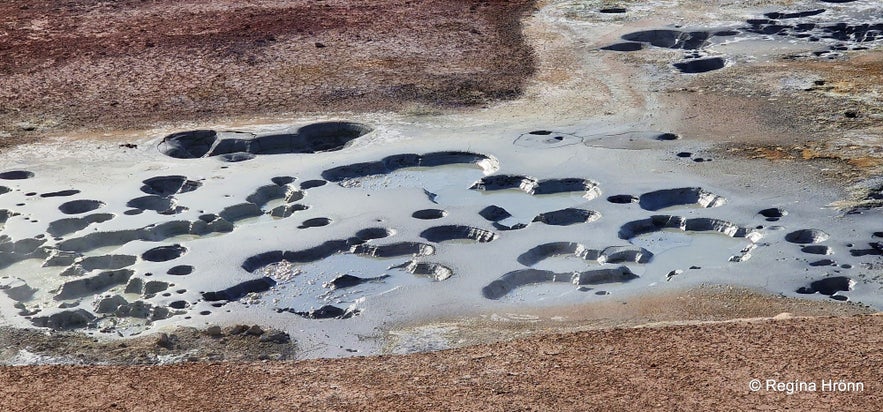 Mud pools at Þeistareykir
Mud pools at Þeistareykir
The young farmers continued to live on the farm at Þeistareykir, but on one occasion, as the farmer was returning home from the nearest village, he met a polar bear with fresh meat in its mouth.
It turned out to be flesh from his wife, which the polar bear had just killed :(
The farmer decided that it was time to move from Þeistareykir to Mývatnssveit.
(Translated into English from Gríma hin nýja, Volume 5, by Þorsteinn M. Jónsson, found in Sagnagrunnur).
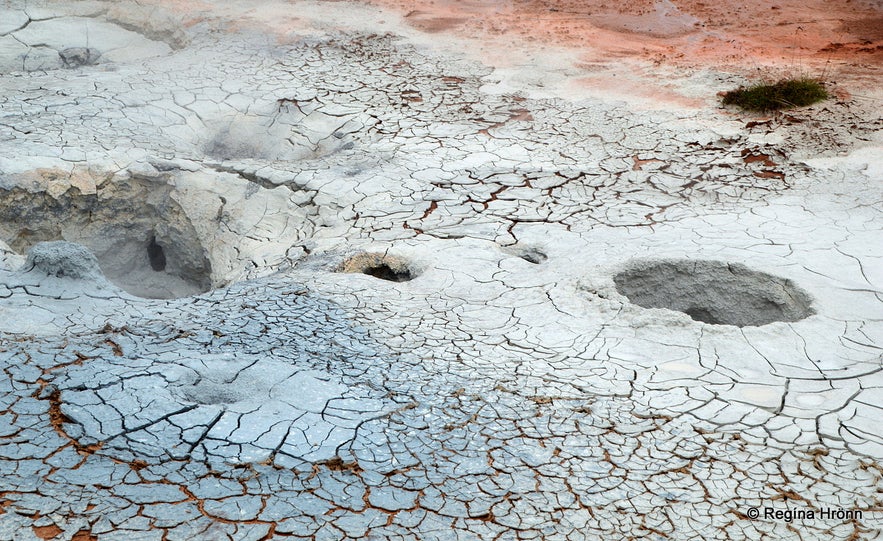
Þeistareykir geothermal area
Another horror story from Þeistareykir tells us about a married couple with two sons living for some years at Þeistareykir.
One harsh winter, there was heavy frost, and drift ice appeared in the whole of North Iceland.
One morning, the inhabitants of the farm were awakened by some racket on the farm. The door to their room was broken into pieces, and a huge polar bear entered the room where the family was sleeping!
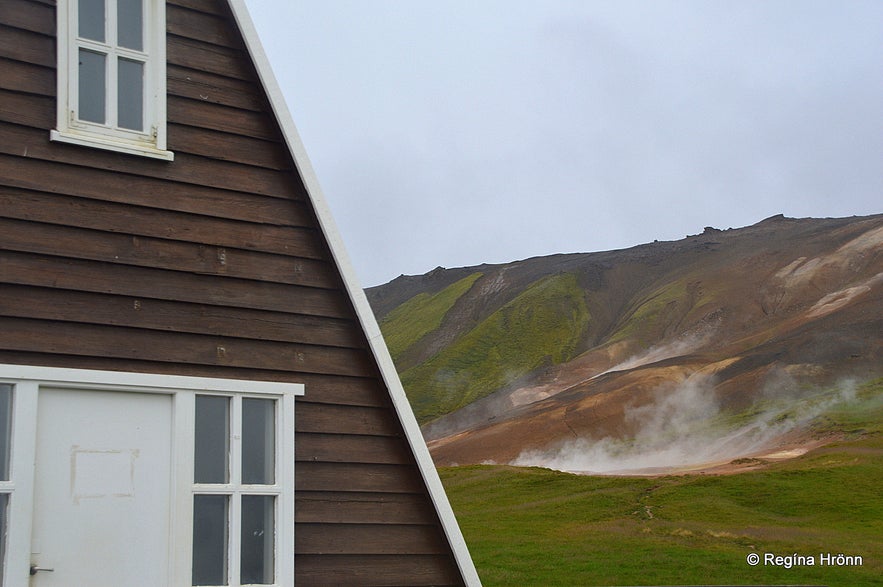
At Þeistareykir
The farmer told his sons to stay in their beds and not to move an inch. He reached for a knife, but before he could reach it, the polar bear slammed him with its huge paw, killed him, and started eating him! And his wife!!
Meanwhile, their sons were lying absolutely still, and they were scared stiff.
As the polar bear had eaten its fill of the dead parents, it left :( This is so horrible!
 The boys, who were 10 and 12 years old, started plotting how to save themselves from the polar bear and to revenge their parents, preferably by killing the polar bear.
The boys, who were 10 and 12 years old, started plotting how to save themselves from the polar bear and to revenge their parents, preferably by killing the polar bear.
So when the polar bear returned to continue eating the dead parents, the boys were ready and waiting for it.
The younger boy arose from his bunker bed, attracting the attention of the polar bear.

Þeistareykir geothermal area
The polar bear rose on its legs to look into the bed, and while it was standing on its hind legs looking for the boy, the older brother stuck the knife into its belly.
The polar bear retreated, and the boys were able to flee to Mývatnssveit. After this horrible incident, Þeistareykir became deserted for a while.
(This tale is found in the book Gróin spor, pages 210-212, written by Jóhannes Friðlaugsson. I translated excerpts from it into English from this website).
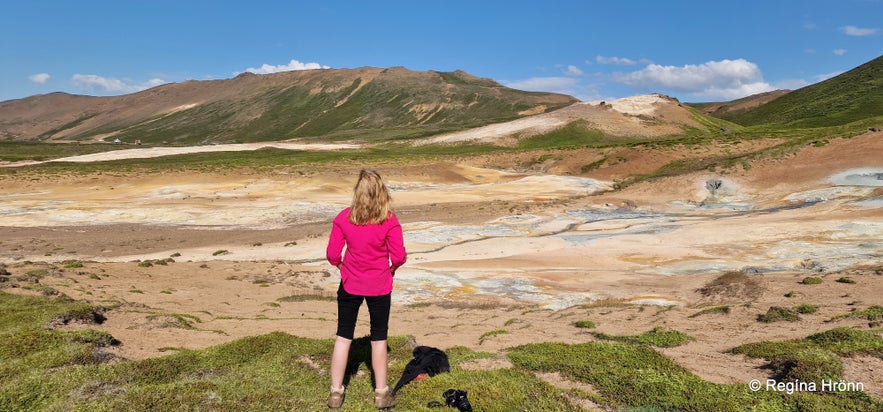 Admiring Þeistareykir geothermal area
Admiring Þeistareykir geothermal area
The Icelandic term for a polar bear is ísbjörn or drift-ice bear, as that is how they end up in Iceland, drifting on ice from Greenland.
Around 250 sightings of polar bears have been recorded in Iceland, with 500 individual bears. In 1880-1881, some 63 polar bears came ashore!
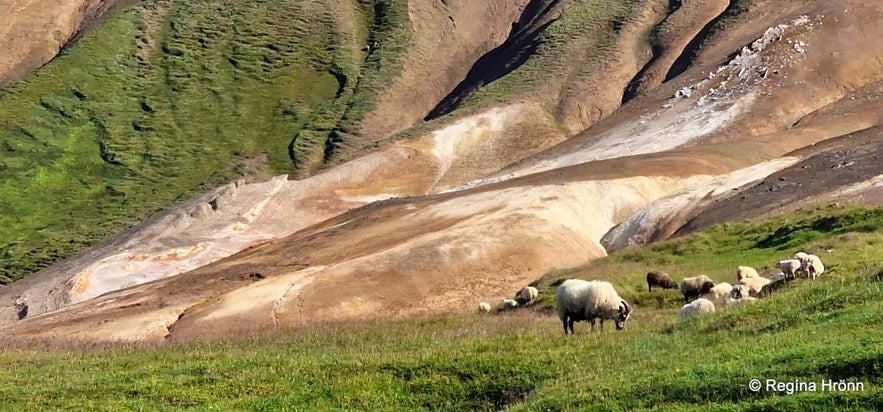
Sheep at Þeistareykir geothermal area
A polar bear came ashore in 2016 at Skagi in North Iceland. So when drift ice is seen around Iceland, we have to be on the lookout for polar bears. There were drift ice sightings by Skagi when I was visiting Þeistareykir.
Apart from an occasional visit from polar bears (the last one in 2024 at Hornstrandir), these cannibals are not native to Iceland, as many people think.
And they are not cuddly, as surprisingly many people think, and will eat us if given half a chance.
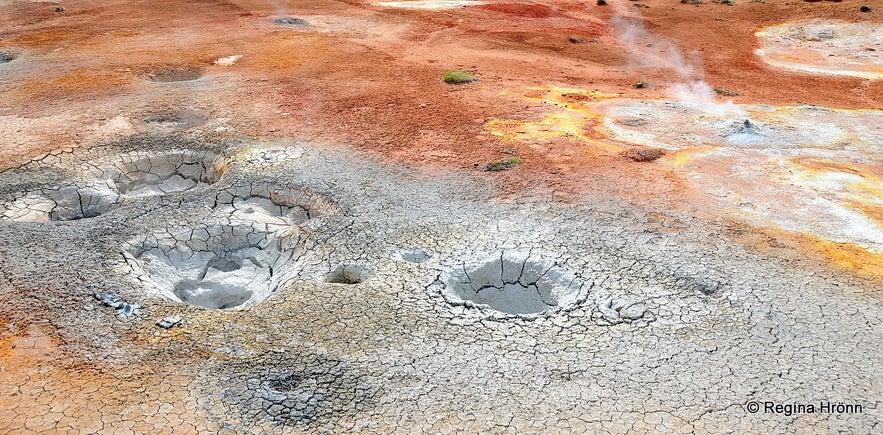
Þeistareykir geothermal area
The only animals I spotted at Þeistareykir though, were some sheep grazing in and by the geothermal area. I have noticed that sheep seem to like geothermal areas, there must be some minerals and salts that they seek here.
This area is used as a summer grazing area for the Aðaldæla- and Reykdælahreppur neighbouring counties, as it is very fertile and grassy. And the information sign states that some 5,000 sheep graze by Þeistareykir!
The brown hut with the red roof, which you see in some of my photos, is a ramblers' hut - a round-up hut.
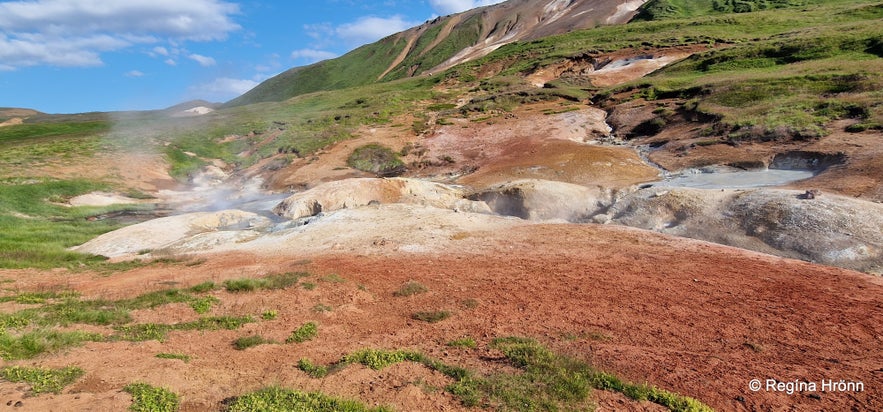 Red, sticky mud at the Þeistareykir geothermal area
Red, sticky mud at the Þeistareykir geothermal area
A word of warning: do not venture out on the red mud by the parking lot in the rain.
I did so, and the red mud sticks to your shoes big time - there was no way I could clean them before entering the car.
I tried my utmost and got rid of some of the mud, but it was thick, heavy, and extremely sticky. So maybe it is best to put plastic covers on your shoes before entering geothermal areas in the rain.
I had to take off my shoes, scrape parts of the mud off the sole of the shoe, and then put them in a sealable bag. It was raining heavily, so of course, that contributed to my predicament.

Þeistareykir geothermal area
Also, be very careful while visiting geothermal areas. In the more visited geothermal areas, you can follow paths, that are never to be strayed from.
But Þeistareykir is off the beaten path for travellers, and there are no paths in the geothermal area. Which makes visiting it dangerous.
You do not want to step into a boiling mud pool!
I stepped on grassy areas and didn't go further than my common sense advised me.
My mother told me when I was younger that she had seen a man accidentally stepping into a hot spring that was hidden beneath the mud.
The skin on his foot rolled up as he got such severe burns. So being extra careful in geothermal areas is of the utmost importance.
On the way to Þeistareykir, I saw this beautiful sight (photo below).
Steam was coming from the lava and moss-covered area by the road - the first sign of us being close to the geothermal area. There is something so mystical about seeing steam coming from the ground.
When driving in Iceland, you will see such a sight in several places, and then you know that you are driving by a high-temperature area. You will also be able to smell the sulphur in the air.
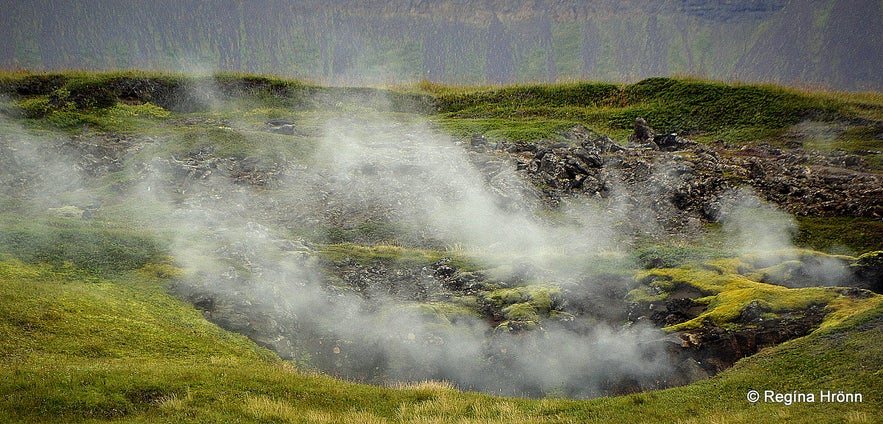
Driving towards Þeistareykir
I took the photo below of the new, paved road in August 2017. It was such a beautiful summer day, and the temperature reached 20 degrees C, which is hot for Iceland.
We meant to visit Þeistareykir back then, but saw in the distance a sandstorm from Hólasandur blowing up. Sandstorms can ruin the paint on the car, so we decided to postpone our visit until a year later.
It was a letdown for sure, being so close to Þeistareykir, but I couldn't control the weather.
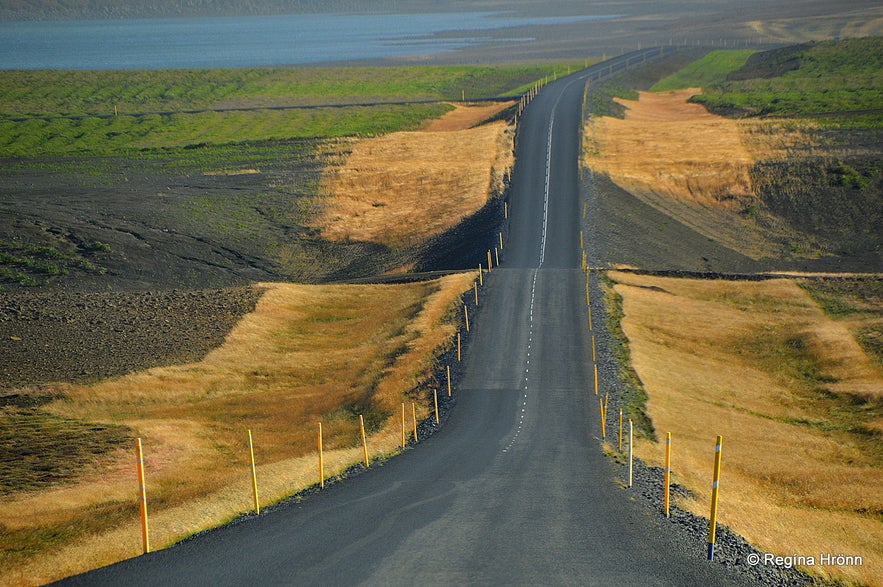
The paved road leading from Húsavík to Þeistareykir
Þeistareykir geothermal area is located some 25 km southeast of Húsavík.
I have not yet come across any guided tours to this area.
But you can rent a car in Reykjavík and explore this area on your own.
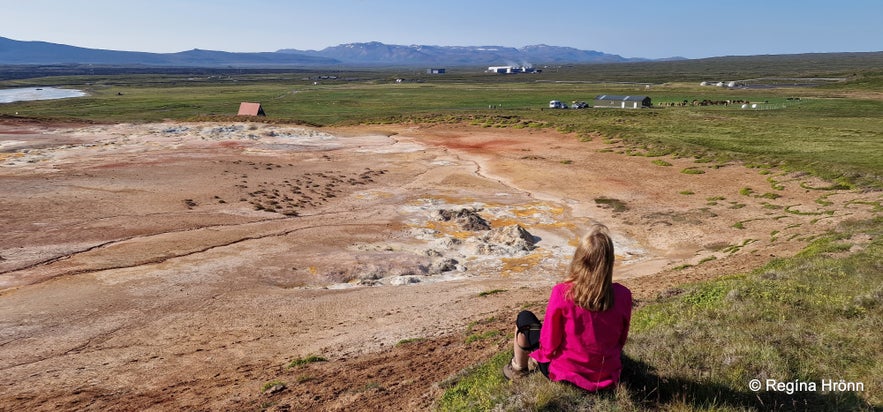 Admiring Þeistareykir in 2025
Admiring Þeistareykir in 2025
Also, check out the self-drive tours, if you find any that include Mývatn, you might want to pop over to Þeistareykir as well.
Maybe this one: 12 Day Budget Self Drive Tour of the Complete Ring Road of Iceland with 3 National Parks & Myvatn. More self-drive tours that include Mývatn, this one is just what I found first.
See also:
The lovely Húsavík - the Whale Watching Capital of Iceland and my Grandmother's Birthplace
The amazing Mývatn & Krafla Area in North Iceland - a Compilation of the wonderful Sights
Have a lovely time exploring Þeistareykir and the wonderful Mývatn, but as always, let's be very careful in geothermal areas.








